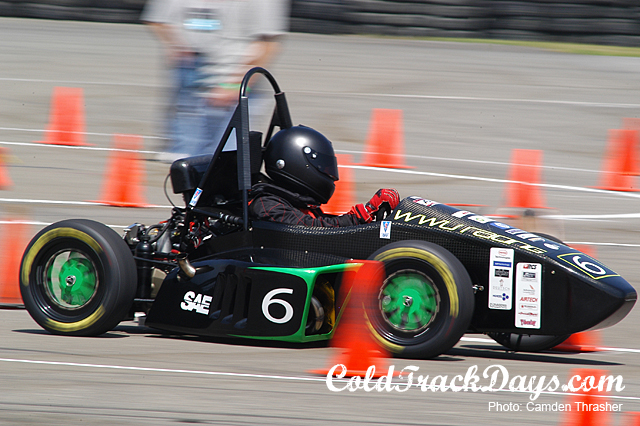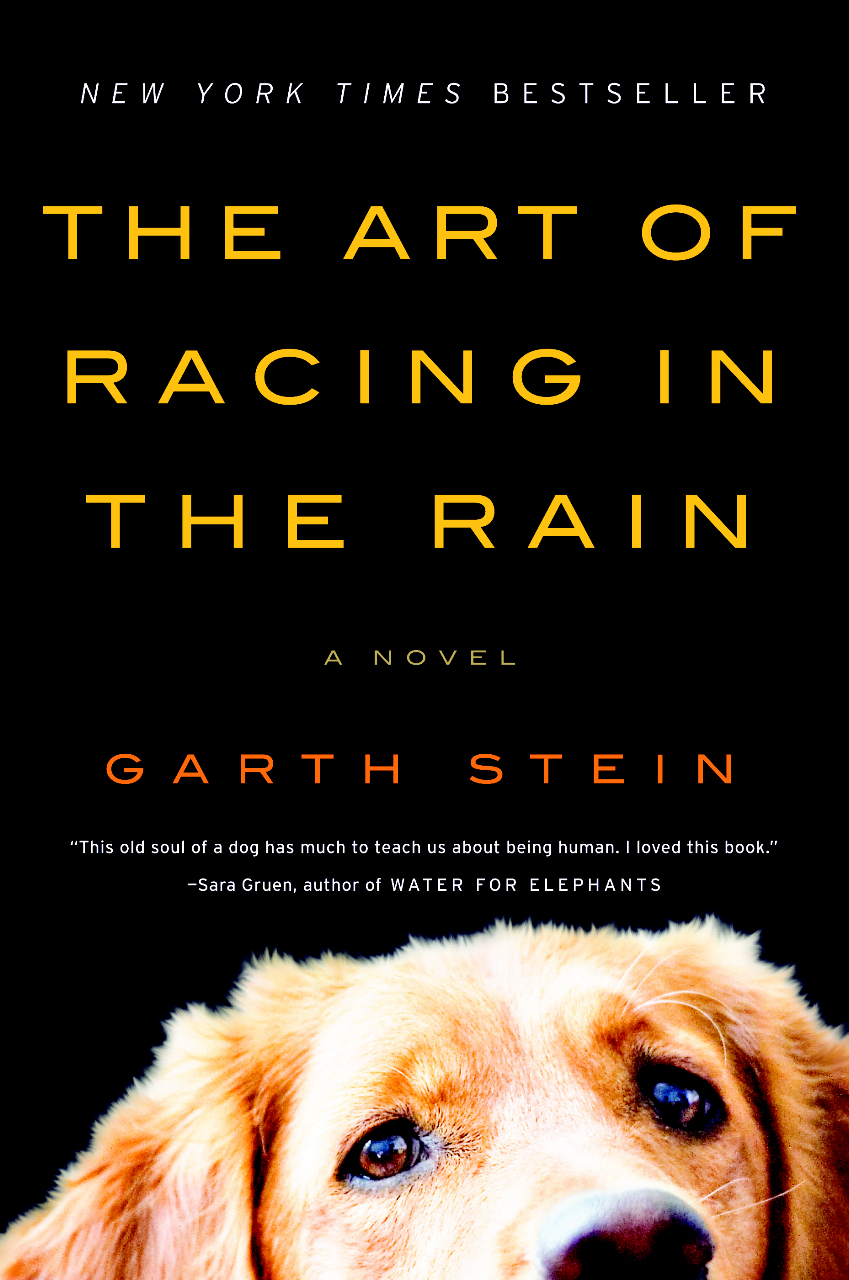 Formula SAE is a competition in which teams of college students design, build, and compete with small formula-style racecars. The competition consists of dynamic events such as autocross and endurance, as well as static events where the teams are judged on design, cost and marketing presentations.
Formula SAE is a competition in which teams of college students design, build, and compete with small formula-style racecars. The competition consists of dynamic events such as autocross and endurance, as well as static events where the teams are judged on design, cost and marketing presentations.
This years FSAE West competition was held at Auto Club Speedway in Fontana, California. Out of over 80 registered teams, only about 45 actually showed up, most likely a due to lack of funds, a function of the poor economic status at the moment.... [read more] As a freshman at Western Washington University, this was my first year on the team. Our 2009 car “Viking 46” features a carbon fiber main chassis tub with a rear welded steel sub-frame which carries the engine and rear suspension. Power comes from a 600cc Honda F4i motorcycle engine through a 20mm air restrictor. This years car uses 13” wheels with Goodyear tires. Total weight without fuel is 467 lbs.
As a freshman at Western Washington University, this was my first year on the team. Our 2009 car “Viking 46” features a carbon fiber main chassis tub with a rear welded steel sub-frame which carries the engine and rear suspension. Power comes from a 600cc Honda F4i motorcycle engine through a 20mm air restrictor. This years car uses 13” wheels with Goodyear tires. Total weight without fuel is 467 lbs.
 After arriving on Wednesday our first priority was to get our car through the rigorous technical inspection. Every inch of the car is checked for compliance with the rules. We were somewhat far down in the tech order and our number was not called before the 7:00 closing time.
After arriving on Wednesday our first priority was to get our car through the rigorous technical inspection. Every inch of the car is checked for compliance with the rules. We were somewhat far down in the tech order and our number was not called before the 7:00 closing time.
 5:45 am wake up call, light breakfast, leave hotel by 6:30, track opens at 7:00. We passed tech on our first try with minimal modifications. Then the car was wheeled directly to the Design presentation where our designers were rigorously questioned by industry experts in their respective fields. Next, the car passed the brake and sound level tests and. After this came the Marketing presentation and the Cost presentation. At 5:30 pm we were called back as one of 7 design semi-finalists for another, more in-depth questioning session, which lasted for around 1.5 hours. Although this was a hectic day, we put in solid performances in every event
5:45 am wake up call, light breakfast, leave hotel by 6:30, track opens at 7:00. We passed tech on our first try with minimal modifications. Then the car was wheeled directly to the Design presentation where our designers were rigorously questioned by industry experts in their respective fields. Next, the car passed the brake and sound level tests and. After this came the Marketing presentation and the Cost presentation. At 5:30 pm we were called back as one of 7 design semi-finalists for another, more in-depth questioning session, which lasted for around 1.5 hours. Although this was a hectic day, we put in solid performances in every event  Friday marked the start of the Dynamic events. First up for us was the Acceleration event, and then on to Skidpad. Our results in Skidpad were okay, but we were having issues with our engine management system. Basically, the engine was receiving way too much fuel, making it non-responsive to throttle inputs.
Friday marked the start of the Dynamic events. First up for us was the Acceleration event, and then on to Skidpad. Our results in Skidpad were okay, but we were having issues with our engine management system. Basically, the engine was receiving way too much fuel, making it non-responsive to throttle inputs.


 The second half of Friday was devoted to Autocross. We were able to replace the faulty sensors causing the fueling problem so our car was running great. Our drivers set some very fast times and continued to improve on each of their runs.
The second half of Friday was devoted to Autocross. We were able to replace the faulty sensors causing the fueling problem so our car was running great. Our drivers set some very fast times and continued to improve on each of their runs.

 Now for a bit on the competition. This car, from the University of Kansas is a good example of what is called an “Aero” car, because of its wings to produce downforce. A number of teams choose to build cars like this but the majority of teams do not for various reasons. The wings can provide loads of extra grip but they do generate significant drag and add extra mass. A well tuned and set up non-wing car can compete and often outclass an aero car on track, so wings don’t provide an unfair advatage.
Now for a bit on the competition. This car, from the University of Kansas is a good example of what is called an “Aero” car, because of its wings to produce downforce. A number of teams choose to build cars like this but the majority of teams do not for various reasons. The wings can provide loads of extra grip but they do generate significant drag and add extra mass. A well tuned and set up non-wing car can compete and often outclass an aero car on track, so wings don’t provide an unfair advatage.  Auburn University had, in my opinion, one of the best looking cars overall.
Auburn University had, in my opinion, one of the best looking cars overall.  University of Washington, seen here locking up both front and rear wheels. There car was quick but their gearbox gave them troubles in the Autocross event and then eventually failed completely during the Endurance event.
University of Washington, seen here locking up both front and rear wheels. There car was quick but their gearbox gave them troubles in the Autocross event and then eventually failed completely during the Endurance event.
 The final day, Saturday, had only one thing on the schedule: Endurance. This event is a 22km race on the same course as the Autocross, only this time run in the opposite direction. Cars are started on one lap intervals, so there are a number of cars on track at any given time. Passing zones are set up in order to let faster cars through. This event also includes a mandatory driver change after the first 11km have been completed.
The final day, Saturday, had only one thing on the schedule: Endurance. This event is a 22km race on the same course as the Autocross, only this time run in the opposite direction. Cars are started on one lap intervals, so there are a number of cars on track at any given time. Passing zones are set up in order to let faster cars through. This event also includes a mandatory driver change after the first 11km have been completed.  Our first driver got off to a very good start, making sure to drive at a smooth and consistent pace without errors. Midway through the first drivers stint, our shift cable broke, leaving us with only second gear. This obviously put a dent in our lap times but given the situation, it was probably the best gear to be stuck in. Our second driver was still able to have a fantastic battle with the University of Oklahoma car. They would pull away under acceleration, but our car could outbrake them.
Our first driver got off to a very good start, making sure to drive at a smooth and consistent pace without errors. Midway through the first drivers stint, our shift cable broke, leaving us with only second gear. This obviously put a dent in our lap times but given the situation, it was probably the best gear to be stuck in. Our second driver was still able to have a fantastic battle with the University of Oklahoma car. They would pull away under acceleration, but our car could outbrake them. 
 Rochester Institute of Technology drove a quick and clean race with no time penalties for hitting cones. This performance, along with top finishes in other events earned them 1st Place Overall, a well deserved win.
Rochester Institute of Technology drove a quick and clean race with no time penalties for hitting cones. This performance, along with top finishes in other events earned them 1st Place Overall, a well deserved win.  The most interesting story of the event certainly belongs to Oregon Stave University. They built an extremely light car, weighing in at only 307 lbs. Perhaps this was a bit too lightweight, as their front control arms ripped away from the chassis during the brake lock-up test. The team worked overnight to fabricate new suspension arms and mounting points. Their repairs held up through all the events and they went on to finish second place overall.
The most interesting story of the event certainly belongs to Oregon Stave University. They built an extremely light car, weighing in at only 307 lbs. Perhaps this was a bit too lightweight, as their front control arms ripped away from the chassis during the brake lock-up test. The team worked overnight to fabricate new suspension arms and mounting points. Their repairs held up through all the events and they went on to finish second place overall.
 Our solid finishes in all the events gave us a 6th place overall, a tie for our best finish ever. There is no doubt that we could have finished better had we not run in to the engine and shift cable issues, however, it was a great experience and a great result. I look forward to building our new car next school year.
Our solid finishes in all the events gave us a 6th place overall, a tie for our best finish ever. There is no doubt that we could have finished better had we not run in to the engine and shift cable issues, however, it was a great experience and a great result. I look forward to building our new car next school year.
Photo/Editorial: Camden Thrasher
7.02.2009
FORMULA SAE // COMPETITION HIGHLIGHTS VIA CAMDEN THRASHER
TAGS //
Camden Thrasher,
EVENTS,
Formula SAE
Subscribe to:
Post Comments (Atom)









Great photos!!! Keep up the good work!
ReplyDelete